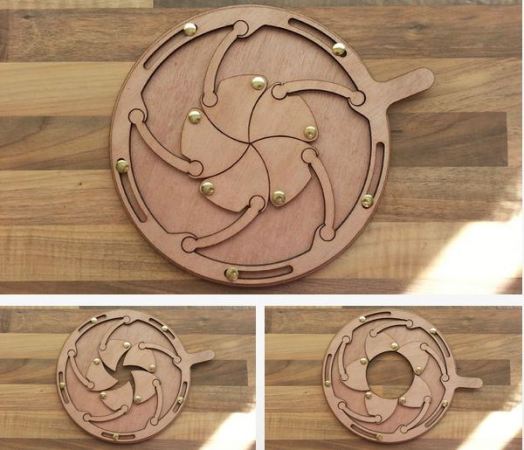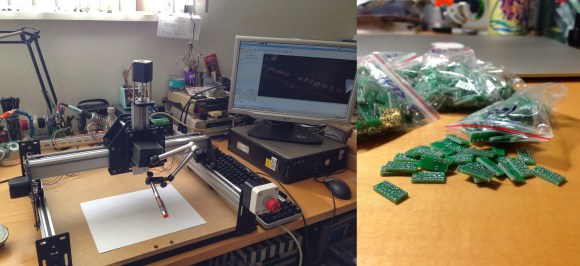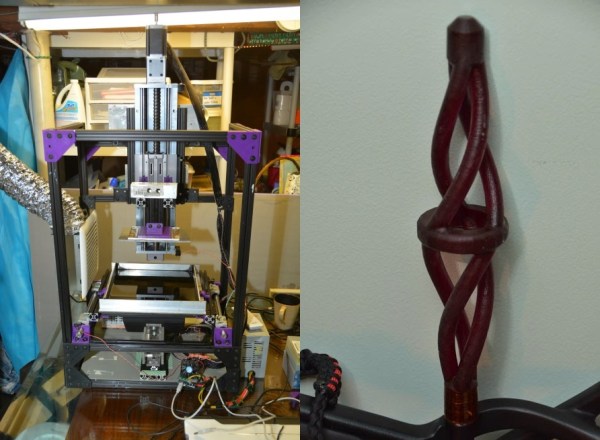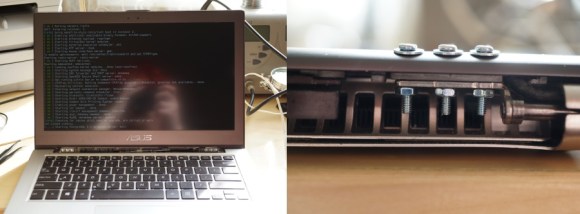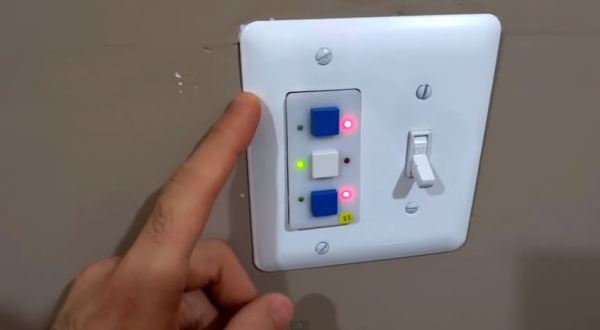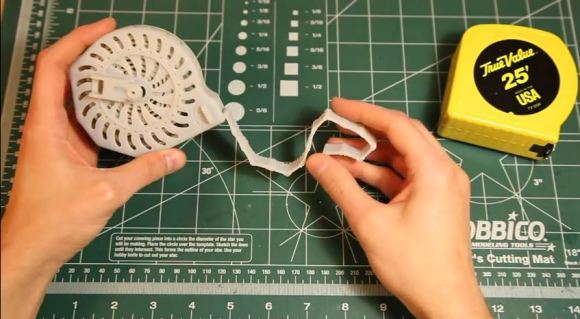
Here’s a new one to push the envelope… How about a 3D printed measuring tape?
This unique 3D printed tool was designed and printed in a single job. [Angry Monk] has been challenging himself lately with these intricate designs, having recently finished a completely 3D printed set of dial calipers, which is impressive in its own right.
Looking for his latest challenge he pondered what it would take to make this 3D printed tape measure. As he continued to think about it he realized how complex it would actually be to pull off. After designing and printing a few of the basic parts to help him solidify his ideas, he set to work. This tape measure has 114 individual parts. It includes 52″ of tape links with 1″ divisions and markings down to the 1/8th of an inch. It even features a hand crank (sorry no spring return) to roll up the tape.
Now as you can imagine, a complex assembly like this is a bit out of the realm of possibility for regular hobby 3D printers — a UV resin printer might be able to do it, but [Angry Monk] used a commercial Objet Eden 3D printer. Still though — it’s an impressive display of design, check out the following video and see for yourself.

